第156章
The trance may be dispelled instantaneously by saying in a rousing voice, 'All right, wake up!' or words of similar purport.At the Saléptrière they awaken subjects by blowing on their eyelids.Upward passes have an awakening effect; sprinkling cold water ditto.Anything will awaken a patient who expects to be awakened by that thing.Tell him that he will wake after counting five, and he will do so.Tell him to waken in five minutes, and he is very likely to do so punctually, even though he interrupt thereby some exciting histrionic performance which you may have suggested.-- As Dr.Moll says, any theory which pretends to explain the physiology of the hypnotic state must keep account of the fact that so simple a thing as hearing the word 'wake!' will end it.THEORIES ABOUT THE HYPNOTIC STATE.
The intimate nature of the hypnotic condition , when once induced, can hardly be said to be understood.Without entering into details of controversy, one may say that three main opinions have been held concerning it, which we may call respectively the theories of 1.Animal magnetism;
2.of Neurosis; and finally of 3.Suggestion.
According to the animal-magnetism theory there is a direct passage of force from the operator to the subject, whereby the latter becomes the former's puppet.This theory is nowadays given up as regards all the ordinary hypnotic phenomena, and is only held to by some persons as an explanation of a few effects exceptionally met with.
According to the neurosis-theory , the hypnotic state is a peculiar pathological condition into which certain pre-disposed patients fall, and in which special physical agents have the power of provoking special symptoms, quite apart from the subjects mentally expecting the effect.Professor Charcot and his colleagues at the Salpétrière hospital admit that this condition is rarely found in typical form.They call it then le grand hypnotisme , and say that it accompanies the disease hystero-epilepsy.
If a patient subject to this sort of hypnotism hear a sudden loud noise, or look at a bright light unexpectedly, she falls into the cataleptic trance.Her limbs and body offer no resistance to movements communicated to them, but retain permanently the attitudes impressed.The eyes are staring, there is insensibility to pain, etc., etc.If the eyelids be forcibly closed, the cataleptic gives place to the lethargic condition, characterized by apparent abolition of consciousness, and absolute muscular relaxation except where the muscles are kneaded or the tendons struck by the operator's hand, or certain nerve- trunks are pressed upon.Then the muscles in question, or those supplied by the same nerve-trunk enter into a more or less steadfast tonic contraction.Charcot calls this symptom by the name of neuro-muscular hyperexcitability.The lethargic state may be primarily brought on by fixedly looking at anything, or by pressure on the closed eyeballs.Friction on the top of the head will make the patient pass from either of the two preceding conditions into the somnambulic state, in which she is alert, talkative, and susceptible to all the suggestions of the operator.The somnambulic state may also be induced primarily, by fixedly looking at a small object.In this state the accurately limited muscular contractions characteristic of lethargy do not follow upon the above-described manipulations, but instead of them there is a tendency to rigidity of entire regions of the body, which may upon occasion develop into general tetanus, and which is brought about by gently touching the skin or blowing upon it.M.Charcot calls this by the name of cutaneo-muscular hyperexcitability.
Many other symptoms, supposed by their observers to be independent of mental expectation, are described, of which I only will mention the more interesting.Opening the eyes of a patient in lethargy causes her to pass into catalepsy.If one eye only be opened, the corresponding half of the body becomes cataleptic, whilst the other half remains in lethargy.Similarly, rubbing one side of the head may result in a patient becoming hemilethargic or hemicataleptic and hemisomnambulic.The approach of a magnet (or certain metals) to the skin causes these half-states (and many others) to be transferred to the opposite sides.Automatic repetition of every sound heard (' echolalia ')
is said to be produced by pressure on the lower cervical vertebræ
or on the epigastrium.Aphasia is brought about by rubbing the head over the region of the speech-centre.Pressure behind the occiput determines movements of imitation.Heidenhain describes a number of curious automatic tendencies to movement, which are brought about by stroking various portions of the vertebral column.Certain other symptoms have been frequently noticed, such as a flushed face and cold hands, brilliant and congested eyes, dilated pupils.Dilated reti- nal vessels and spasm of the accommodation are also reported.
The theory of Suggestion denies that there is any special hypnotic state worthy of the name of trance or neurosis.All the symptoms above described, as well as those to be described hereafter, are results of that mental susceptibility which we all to some degree possess, of yielding assent to outward suggestion, of affirming what we strongly conceive, and of acting in accordance with what we are made to expect.The bodily symptoms of the Salépêtrière patients are all of them results of expectation and training.The first patients accidentally did certain things which their doctors thought typical and caused to be repeated.The subsequent subjects 'caught on' and followed the established tradition.